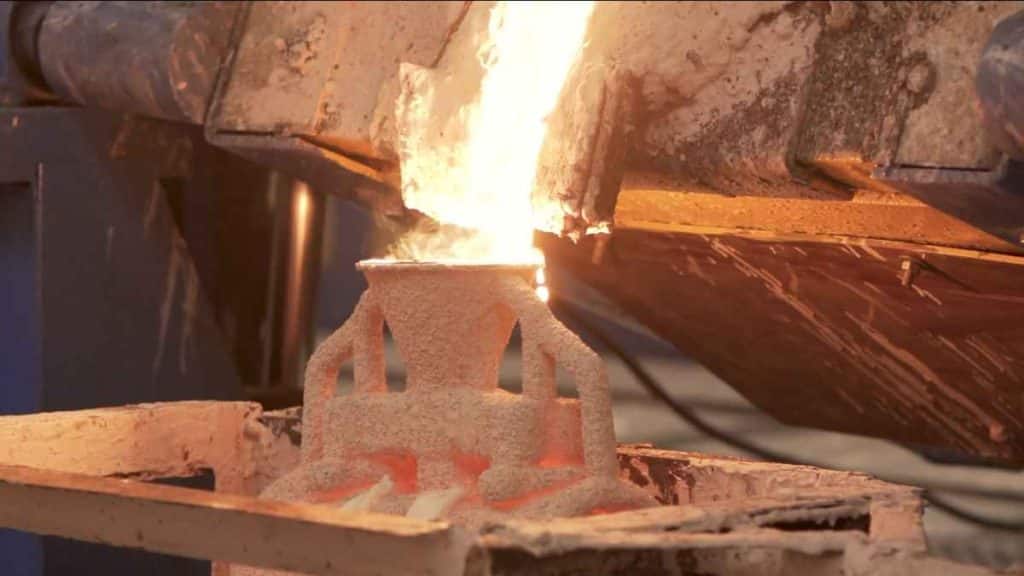Precision steel casting is a critical process in various industries, from aerospace and automotive to medical and energy. Among the various casting techniques, the lost-wax method stands out for its ability to create complex and detailed steel castings with remarkable precision. This blog post will provide an in-depth understanding of this unique casting method, its advantages, and its potential applications across multiple sectors.
The Art of Lost-Wax Casting
A Brief History
The lost-wax casting process, also known as investment casting, has a long and storied history dating back to ancient civilizations. Early examples of this technique can be found in the production of intricate gold and bronze artifacts. The process has evolved significantly over time, and today, it is widely utilized in producing precision steel castings.
The Process Explained
- Lost-wax casting is a multi-step process that involves the following stages:
- Creation of a wax pattern: An accurate wax model of the desired casting is developed using various techniques, such as hand-carving or injection molding.
- Assembly of wax patterns: Multiple wax patterns may be connected using a gating system to form a “tree” structure, enabling efficient pouring of molten metal.
- Investment of the wax pattern: The wax “tree” is coated with a refractory slurry, which forms a ceramic shell around the wax once hardened.
- Removal of the wax: The ceramic shell is heated, causing the wax inside to melt and leaving behind a cavity in the shape of the desired casting.
- Pouring of molten metal: The cavity is filled with molten metal, which then cools and solidifies to form the final casting.
- Shell extraction: The ceramic shell is carefully broken away, revealing the completed metal casting.
- Finishing touches: The casting is cleaned, and any necessary post-processing operations are performed to achieve the desired specifications.
The Perks of Lost-Wax Casting
Unparalleled Design Versatility
The lost-wax method affords engineers extensive freedom in product design, allowing them to create intricate and elaborate shapes that might be challenging or impossible to achieve using alternative casting techniques.
A Broad Range of Material Options
Lost-wax casting accommodates a wide variety of materials, giving engineers the flexibility to choose the most suitable material for a specific application.
High Precision and Detail
Thanks to the use of wax patterns, the lost-wax process can reproduce designs with exceptional accuracy, resulting in high-quality castings that adhere to tight tolerances and require minimal machining.
Superior Surface Finish
Castings produced through the lost-wax method generally exhibit a smooth surface finish, which minimizes the need for post-processing and polishing.
Exploring Applications of Precision Steel Castings
The accuracy and versatility of the lost-wax casting method make it a popular choice for a diverse array of industries and applications, including:
Aerospace: Fabrication of complex components for aircraft engines, landing gear systems, and more.
Automotive: Manufacturing of engine components, transmission parts, and other crucial vehicle systems.
Medical: Production of surgical instruments, implants, and prosthetics with high precision and biocompatibility.
Energy: Development of components for power generation, including gas turbines and renewable energy systems.
Embracing Sustainability with Lost-Wax Casting
Resource Conservation
The lost-wax casting process promotes resource efficiency by producing castings that require minimal machining, thus reducing material waste during the manufacturing process.
Recycling Opportunities
Materials used in the lost-wax casting process, such as wax and metal, can often be recycled and reused, further minimizing waste and contributing to a more eco-friendly production process.
Ensuring Quality in Precision Steel Castings
Maintaining quality throughout the lost-wax casting process is crucial to achieving high-quality precision steel castings. This can be achieved through:
- Inspection of wax patterns: Thorough examination of the wax patterns prior to investment ensures the accuracy and quality of the final casting.
- Supervision of the investment process: Monitoring the application of the refractory slurry and ensuring the proper thickness of the ceramic shell.
- Metal quality assurance: Verifying the composition and properties of the molten metal used in the casting process.
- Non-destructive testing: Employing techniques such as radiographic, ultrasonic, or magnetic particle inspection to identify potential internal or surface defects in the castings.
The Future of Lost-Wax Casting
As industries continue to demand components with ever-increasing complexity and precision, the lost-wax casting method is likely to maintain its importance in the field of precision steel casting. Innovations in materials science, automation, and quality control will further enhance the capabilities of this age-old process, providing even greater opportunities for its application across diverse industries.
The lost-wax casting method is an invaluable technique that has significantly impacted the world of precision steel casting. Its ability to produce intricate, complex shapes and its adaptability to various materials make it an ideal choice for industries seeking high-quality castings. By prioritizing sustainability through resource conservation and recycling, the lost-wax casting process supports environmentally responsible manufacturing. As technology and industry demands evolve, the lost-wax casting process will continue to adapt and provide innovative solutions to meet the needs of the future.

